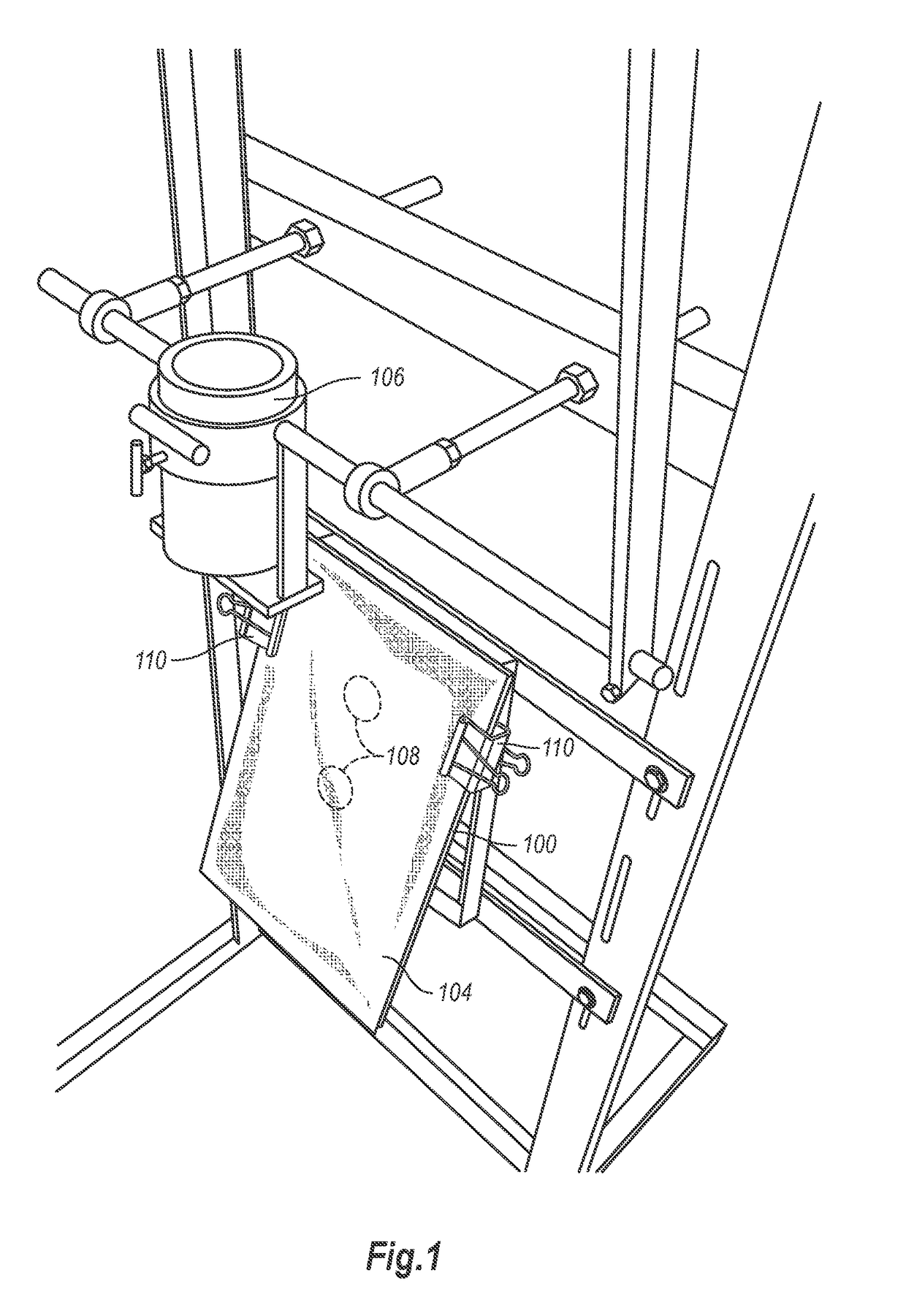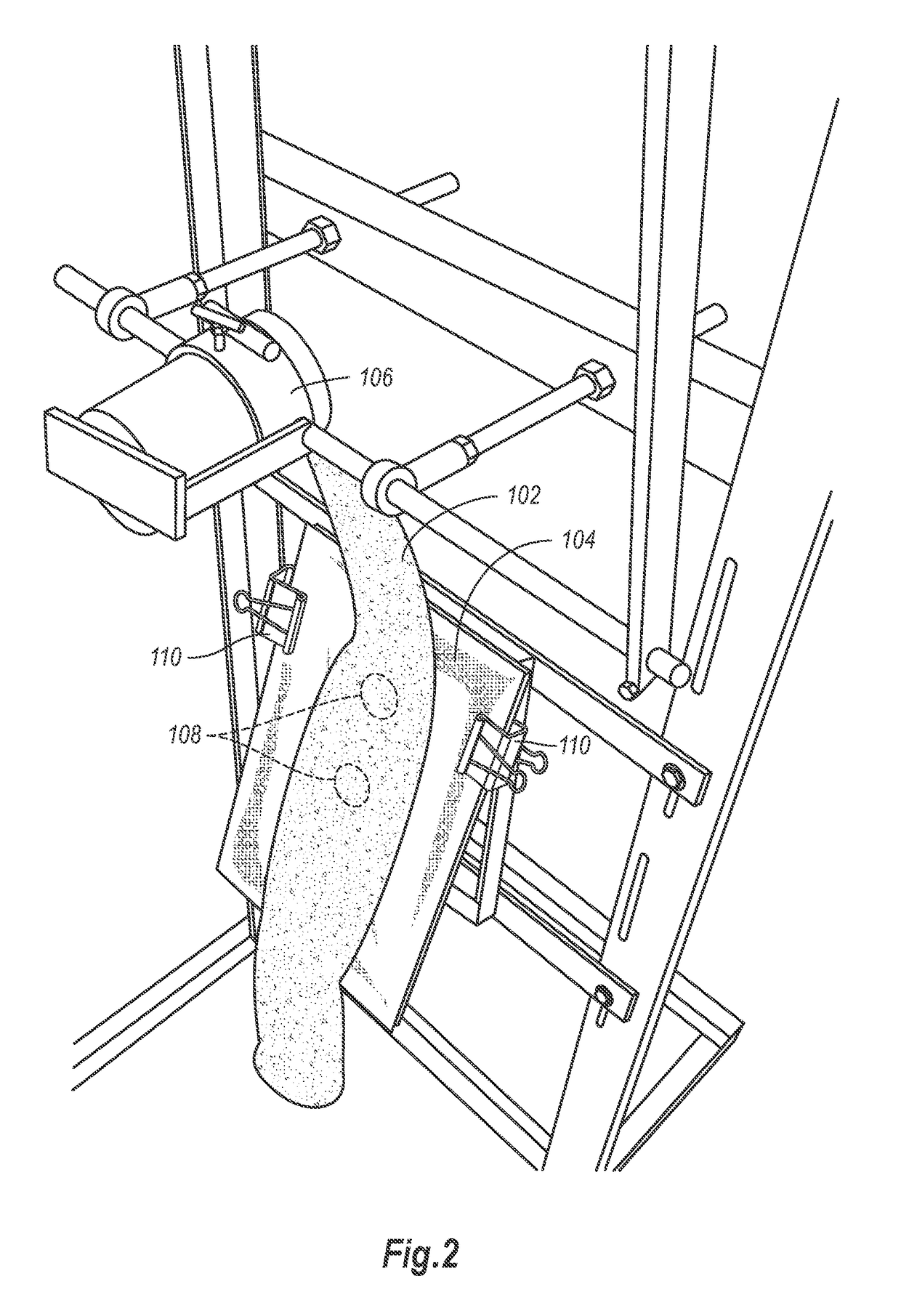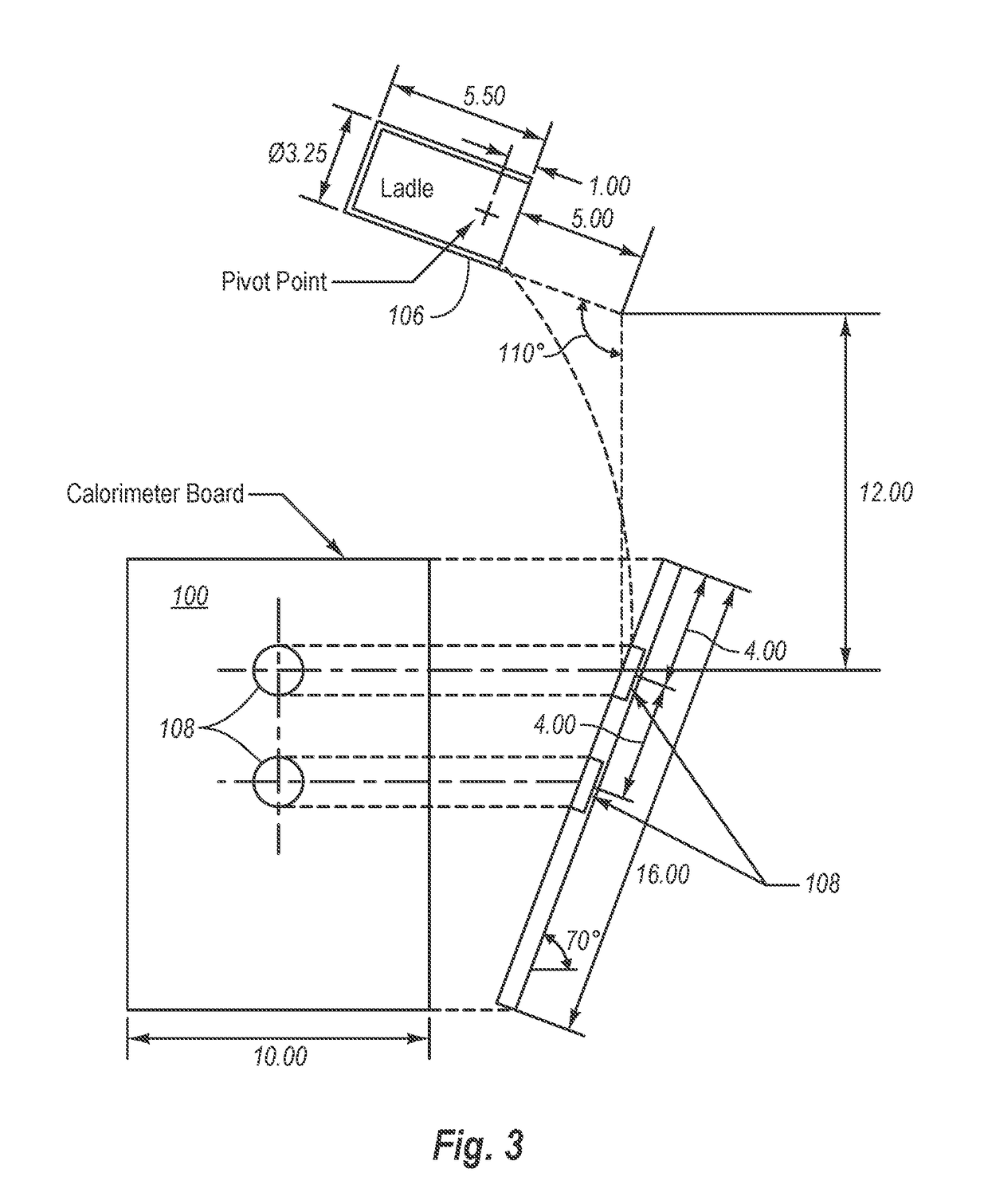Breathable Fire Resistant Fabrics
a fire-resistant fabric and breathable technology, applied in protective fabrics, ornamental textile articles, weaving, etc., can solve the problems of not protecting fabric or user, not suitable for use, etc., and achieve the effect of high heat capacity
- Summary
- Abstract
- Description
- Claims
- Application Information
AI Technical Summary
Benefits of technology
Problems solved by technology
Method used
Image
Examples
example 1
[0080]A lightweight protective fabric made from a yarn having a 70:30 wt % blend of O-Pan and p-aramid, respectively, is encapsulated with a liquid shedding and strengthening silicone-based polymer as follows. First, the fabric is placed under tension. Second, the tensioned fabric is drawn through a vessel containing a silicone-based polymer resin. Third, the silicone-based polymer resin is subjected to localized shear-thinning forces produced by a rapidly spinning shearing blade adjacent to a surface of the fabric in order for the shear-thinned resin to encapsulate the yarn of the fabric and at least partially penetrate into interstitial spaces of the yarn. The viscosity of the silicone-based polymer resin is sufficiently low that it does not plug the spaces between the individual yarn strands of the fabric. Fourth, the treated tensioned fabric is removed from the vessel containing the silicone-based polymer resin. Fifth, the treated fabric is heated in order to cure the silicone-b...
example 2
[0084]A lightweight protective fabric made from a yarn having a 60:20:20 wt % blend of O-Pan, p-aramid, and m-aramid, respectively, is treated in the manner discussed in Example 1. The resulting lightweight fabric is somewhat stronger and more durable than the lightweight fabric obtained in Example 1 as a result of including a blend of strengthening fibers.
[0085]The lightweight protective fabric can be fashioned into lightweight protective clothing. The protective fabric or clothing is lightweight (e.g., less than about 15 oz / yd2) and also can be breathable so as to provide far greater comfort as compared to asbestos or fiberglass fabrics that are 32-40 oz / yd2 used to make heavy blankets or gloves, whether or not coated with heavy silicone coatings, which yield a stiff, board-like article that is entirely unsuitable for use in making articles of wearable clothing.
[0086]The lightweight protective fabric or clothing is also better able to resist charring and shrinkage compared to the ...
example 3
[0087]A lightweight protective fabric made from a yarn consisting of 100% O-Pan is treated in the manner discussed in Example 1. Even though the lightweight fabric made from 100% O-Pan is relatively weak and fragile, treatment with the silicone polymer greatly increases the tensile strength, abrasion resistance, and durability so as to be acceptable for applications for which the fabric would otherwise be unacceptable absent the encapsulation treatment.
[0088]The lightweight protective fabric can be fashioned into lightweight, flexible protective clothing. The protective fabric or clothing is lightweight (e.g., less than about 15 oz / yd2) and flexible so as to provide far greater comfort as compared to asbestos or fiberglass fabrics that are 32-40 oz / yd2 used to make heavy blankets or gloves, whether or not coated with heavy silicone coatings.
[0089]The lightweight protective fabric or clothing is also better able to resist charring and shrinkage compared to the untreated O-Pan fabric....
PUM
| Property | Measurement | Unit |
|---|---|---|
| Fraction | aaaaa | aaaaa |
| Fraction | aaaaa | aaaaa |
| Fraction | aaaaa | aaaaa |
Abstract
Description
Claims
Application Information
 Login to View More
Login to View More - R&D
- Intellectual Property
- Life Sciences
- Materials
- Tech Scout
- Unparalleled Data Quality
- Higher Quality Content
- 60% Fewer Hallucinations
Browse by: Latest US Patents, China's latest patents, Technical Efficacy Thesaurus, Application Domain, Technology Topic, Popular Technical Reports.
© 2025 PatSnap. All rights reserved.Legal|Privacy policy|Modern Slavery Act Transparency Statement|Sitemap|About US| Contact US: help@patsnap.com



